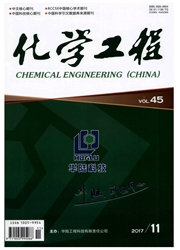

 中文摘要:
中文摘要:
基于渗流理论,建立了气化过程中单颗粒煤焦的破碎成灰模型,研究了煤焦结构对气化反应性能的影响,煤焦结构的演变过程以及最终的残灰粒径分布。模拟结果表明:随着初始孔隙率的增加,煤焦在气化前期的气化反应和破碎程度更为剧烈。对于初始孔隙率较小的煤焦,在气化末期,当转化率超过某一数值时,煤焦粒径急剧下降,这与文献报道的实验结果吻合。残灰粒径分布曲线在超微米区(1—10μm)存在一个峰值粒径,这是内在矿物质的聚合与煤焦破碎相互竞争的结果。随着初始孔隙率的增加,残灰的峰值粒径呈下降的变化趋势,残灰主要集中在粒径较小的范围内。
 英文摘要:
英文摘要:
Based on percolation theory,the model of coal char fragmentation and residual ash formation during gasification was set up. The effect of char structure on gasification reactivity,the evolution of char structure,and the final residual ash particle size distribution was studied. The simulation results show that the coal char gasification and fragmentation become more drastic in the early stage with increasing initial porosity. For the coal char with lower initial porosity,the conversion exceeds a value in the later stage,the char diameter decreases rapidly,which agrees with the experiment results reported in the literature. Residual ash particle size distribution curves have a peak particle size in the super-micron size range( 1-10μm),which is the result of the competition between mineral coalescence and char fragmentation. As the initial porosity increases,the peak particle size of residual ash decreases,and the residual ash concentrates on the range of smaller particle size.
 同期刊论文项目
同期刊论文项目
 同项目期刊论文
同项目期刊论文
 期刊信息
期刊信息
